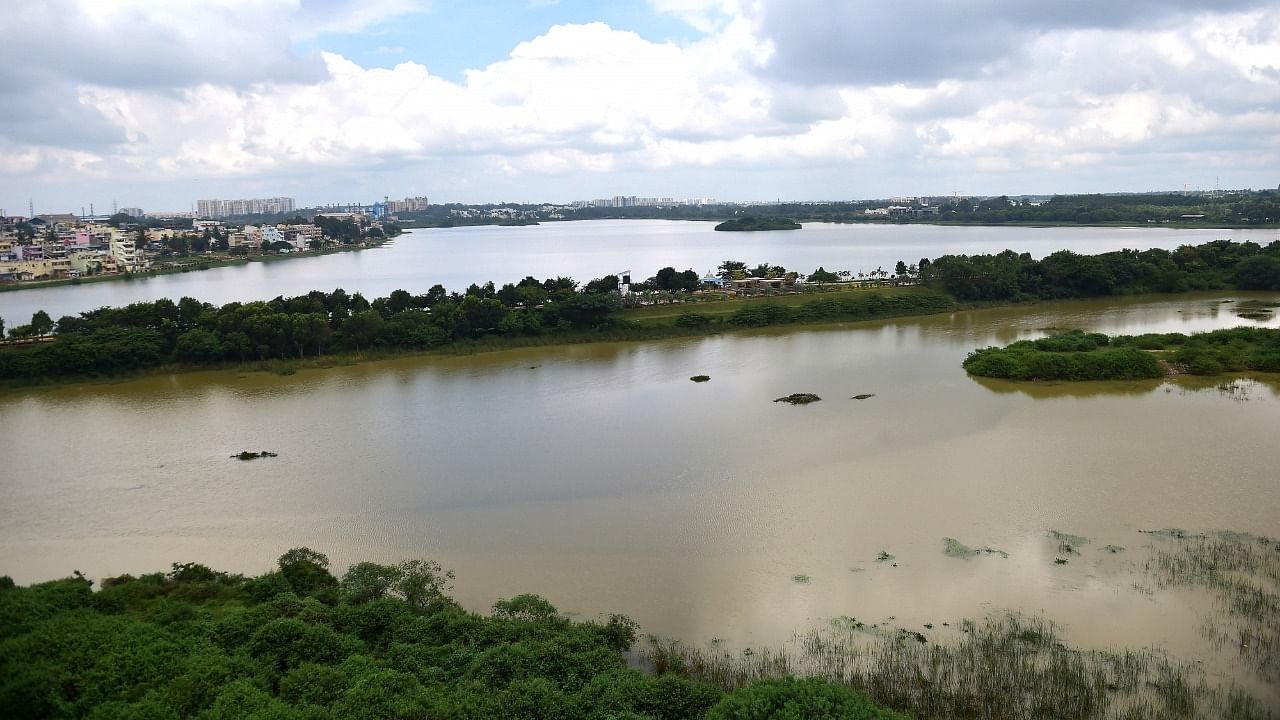
Bengaluru’s ecology has very little to celebrate as almost 90% of its lakes either got encroached or dried up or were taken over by the government. Rejuvenation efforts by multiple agencies have not really been effective.
Many lakes such as Mathikere lake, Halasuru lake, Hebbal lake and Sankey tank are stuck in some or other restoration projects due to lack of funding and licencing issues from authorities.
“I visit lakes to get myself out of the chaos of the city. Stopping by Sankey Tank is the most calming activity of my week. The BBMP’s Rs 30 crore project, which got sanctioned the previous year, has not started yet, and it’s concerning every visitor to the lake,” notes Dhanush P, a resident of Malleswaram.
The project, he says, is only about embellishing the view of the lake and surrounding pathways. “In my opinion, the lake’s restoration and sewage treatment are more critical as the water body may not last long due to zero maintenance,” he adds.
Also read: Urgently needed: A lake planning policy
Several lakes in the city are losing their capacity to hold water due to siltation, poor sewage system and garbage dumping. Due to these, several micro-environmental damages such as over-surging water and drying up of lakes occur. Half of the city’s lakes, it is feared, could dry up in the coming decade.
This is quite alarming for the city. “I hail from Mathikere, an area which has its foundation atop a lake. The area itself has the word ‘kere’, meaning lake in Kannada but it’s disheartening to see the lake vanish by the day,” notes Arjun Iyer, a student.
“My grandparents used to say how big the lake was when they moved into this area about 25 years ago. I remember about a decade or so ago, there were concerns raised regarding the health and water holding capacity of the lake and how it had decreased approximately from 120 odd acres to around 85 acres in size,” Arjun adds.
The year 2021 has given the city an abundance of rainfall which is good news for the water bodies. “But, almost every lake in the city is losing its capacity to dissolve oxygen beneath the surface, due to the amount of silt and sewage waste lake is holding.”
Halasuru lake, despite being in the spotlight, has several inlets that bring untreated sewage from several parts of the city. “I have been in the city since 1995, and have seen a number of ambitious projects designed to address the sewage inflow and silt deposits. But this is not the solution yet,” says Lalit Prasad, a Sahakarnagar resident who frequently visits the lake.
The lakes, he says, need a water-retaining system, and proper law and order to preserve the wetlands as they play a crucial role in the longevity of the lakes. “Bengaluru is known for its vibrant lakes, and the authorities are responsible to preserve it.”
Unplanned urbanisation, poor sewage treatment and encroachment of wetlands have all been responsible for aggravating the lake crisis. Heavy rainfall has indeed been a windfall for Bengaluru, but the lakes no longer have the capacity to retain all that water, thus triggering a man-made imbalance in the ecosystem.